Pennant Bundle
Unveiling the Inner Workings of Pennant Company: A Deep Dive
The Pennant Group is a prominent player in healthcare, but how does its unique approach translate into success? Its decentralized model and focus on home health, hospice, and senior living set it apart. Understanding the Pennant SWOT Analysis, its operations, and revenue streams is crucial for anyone seeking to understand the healthcare landscape.
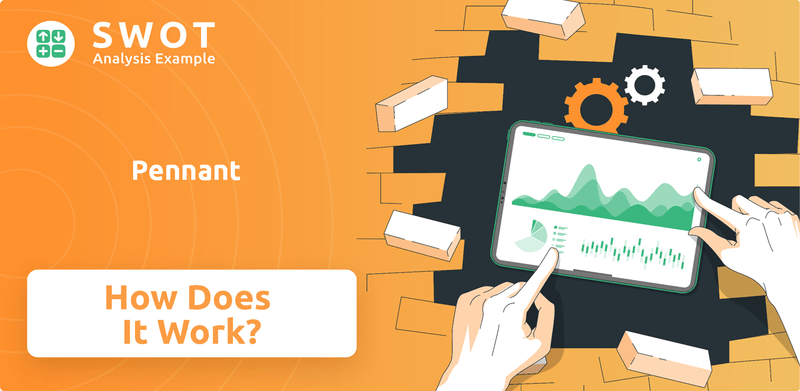
This exploration of the Pennant Company will dissect its core Pennant operations, offering insights into how it generates revenue and navigates the complexities of the healthcare industry. From its Pennant business model to its patient-centered approach, we'll examine the factors driving its growth and the Pennant services it provides. Whether you're an investor or a business strategist, this analysis will provide a comprehensive understanding of the company's value proposition and competitive advantages, answering questions like "How does Pennant Company generate revenue?" and "What is the Pennant Company's core business?"
What Are the Key Operations Driving Pennant’s Success?
The core of the Pennant Company lies in delivering home health, hospice, and senior living services. Their value proposition centers on providing care to seniors requiring assisted living, individuals needing skilled nursing at home, and those seeking end-of-life support. This broad approach allows them to cater to a wide range of needs within the senior care market.
The Pennant business model is distinguished by its decentralized operational structure. Local agency and community leaders have significant autonomy, allowing them to tailor services to specific local needs. This approach fosters a strong sense of ownership and accountability, which is a key differentiator in the competitive landscape.
Operational processes at Pennant Company include clinical care delivery, patient intake and assessment, care coordination, regulatory compliance, and facility management. They also manage the supply chain, procuring medical supplies, equipment, and pharmaceuticals, often at the local level. Partnerships with healthcare providers, referral networks, and community organizations are vital for patient and resident acquisition. This localized empowerment leads to agility and responsiveness, setting them apart from more centralized competitors.
Local leaders have significant autonomy, enabling them to adapt services to meet specific community needs. This fosters a strong sense of ownership and accountability. The decentralized model allows for agility and responsiveness in diverse markets.
They offer a wide array of services, including home health, hospice, and senior living options. This comprehensive approach caters to a diverse demographic, from assisted living to end-of-life care. The broad service portfolio enhances their value proposition.
The supply chain involves procurement of medical supplies, equipment, and pharmaceuticals, often managed locally. This ensures responsiveness and efficiency in meeting patient needs. Localized supply chain management contributes to operational effectiveness.
Partnerships with healthcare providers, referral networks, and community organizations are integral to their distribution strategy. These collaborations ensure a steady flow of patients and residents. Strong partnerships enhance their market reach and service delivery.
The Pennant services provide highly personalized care, faster adaptation to local healthcare trends, and a strong community presence. This ultimately enhances patient and resident satisfaction. The localized approach leads to improved outcomes and greater customer loyalty.
- Personalized Care: Tailored services to meet individual needs.
- Local Adaptation: Quick response to changing healthcare trends.
- Community Presence: Strong local ties for better support.
- High Satisfaction: Enhanced patient and resident experiences.
Pennant SWOT Analysis
- Complete SWOT Breakdown
- Fully Customizable
- Editable in Excel & Word
- Professional Formatting
- Investor-Ready Format
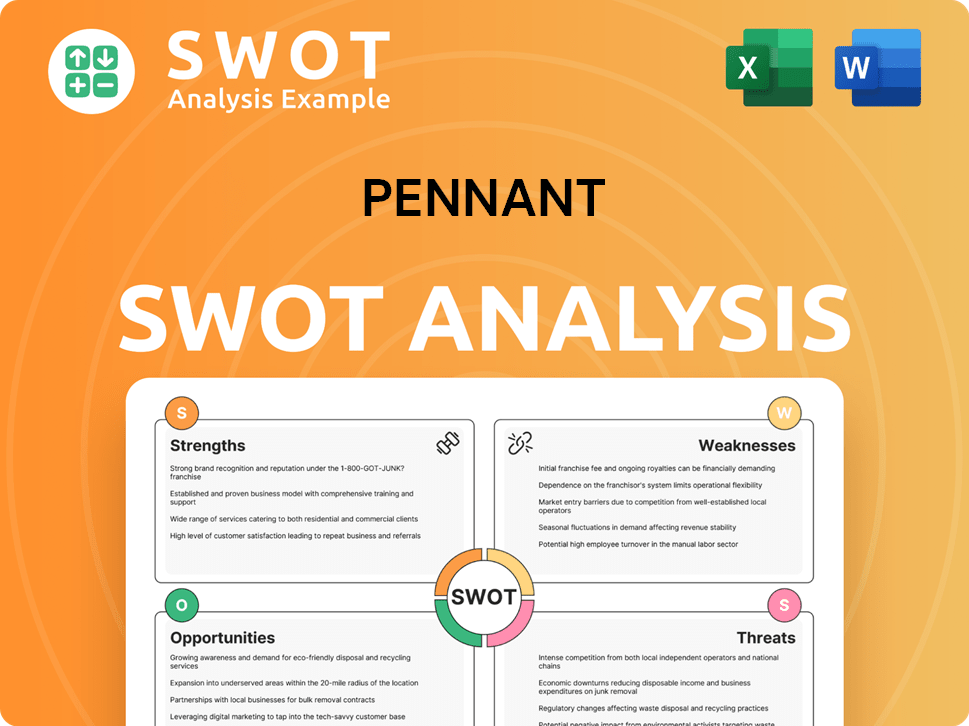
How Does Pennant Make Money?
The Pennant Company generates its revenue through a diversified approach, primarily centered on its home health, hospice, and senior living segments. This multi-faceted strategy allows the company to cater to various healthcare needs, creating multiple avenues for income generation. The financial success of the company is closely tied to the operational efficiency and strategic expansion within these key areas.
As of the fiscal year 2024, the company's revenue streams are well-defined, with significant contributions from each of its core services. The company's ability to maintain and grow these revenue streams is crucial for its overall financial health and its capacity to invest in future growth initiatives. This balanced approach helps mitigate risks and ensures a more stable financial outlook.
In the first quarter of 2024, the company reported total revenue of $147.7 million. Home health and hospice services contributed $99.1 million, while senior living services brought in $48.6 million. This demonstrates a strong revenue mix, with a substantial portion derived from home health and hospice services.
The
Pennant business model
employs a fee-for-service model, particularly in home health and hospice, where services are reimbursed by Medicare, Medicaid, and private insurance. In senior living, the revenue is generated through resident fees, which vary based on the level of care and amenities provided. These strategies are essential for the company's financial performance.- Optimizing occupancy rates in senior living communities.
- Expanding referral networks for home health and hospice agencies.
- Growing its presence in underserved markets.
- Expanding service offerings and geographical footprint.
Pennant PESTLE Analysis
- Covers All 6 PESTLE Categories
- No Research Needed – Save Hours of Work
- Built by Experts, Trusted by Consultants
- Instant Download, Ready to Use
- 100% Editable, Fully Customizable
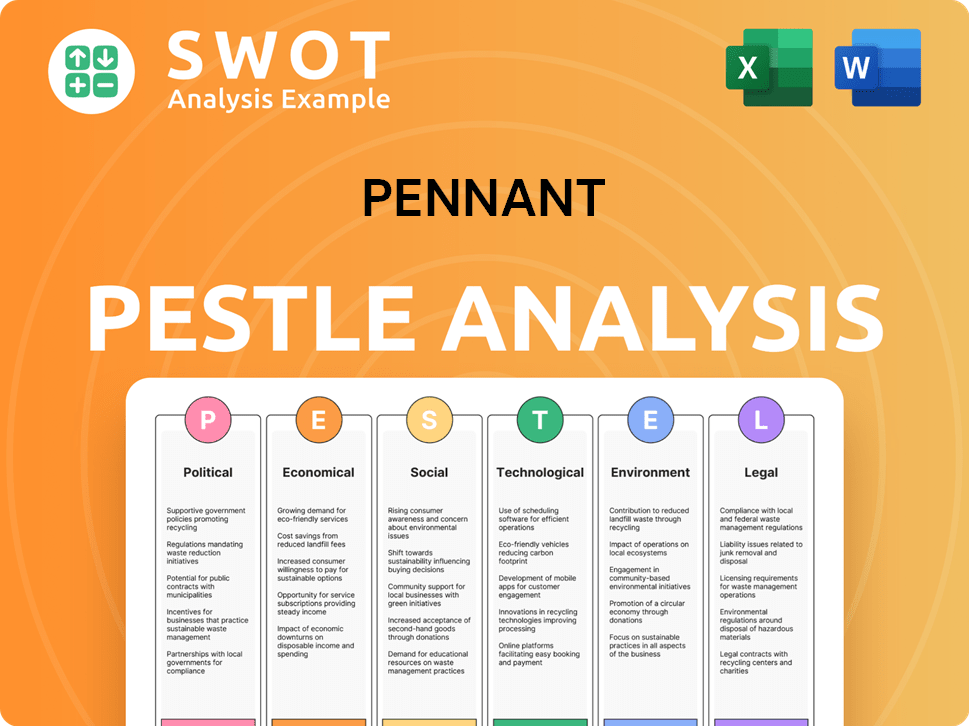
Which Strategic Decisions Have Shaped Pennant’s Business Model?
The Pennant Company has achieved several key milestones that have significantly impacted its operational and financial results. A critical strategic move has been its focus on expanding into underserved markets. This approach has allowed the company to establish a robust presence where healthcare services might be less accessible. The company's decentralized operating model has also been instrumental, empowering local management and promoting operational agility.
The company has demonstrated resilience in facing operational challenges, such as navigating the complexities of healthcare regulations and adapting to evolving market demands. For example, in the first quarter of 2024, the company's home health and hospice segments saw a 9.2% increase in revenue compared to the prior year. This growth highlights effective operational management and market penetration. The company's ability to strategically acquire and integrate new agencies and communities also contributes to its economies of scale and market reach.
The Pennant Company continues to adapt to new trends by focusing on quality improvement initiatives and leveraging its local expertise to navigate the dynamic healthcare landscape. Its commitment to clinical excellence and patient-centered care builds a strong brand reputation and fosters customer loyalty. To learn more about the growth strategy of the company, consider reading this article about Growth Strategy of Pennant.
Significant milestones include strategic expansions into underserved markets and the implementation of a decentralized operating model. These moves have allowed the company to establish a strong presence and respond effectively to local healthcare needs. The company has shown resilience in facing operational challenges.
The strategic moves of the Pennant Company include a focus on underserved markets, a decentralized operating model, and strategic acquisitions. These moves have enhanced the company's ability to adapt to regional healthcare needs and regulatory changes. The company's focus on quality improvement initiatives is also a key strategic move.
The Pennant Company's competitive advantages stem from its decentralized model and commitment to clinical excellence. This approach fosters a strong local presence and responsiveness, leading to higher patient satisfaction. The company's ability to strategically acquire and integrate new agencies also contributes to its economies of scale and market reach.
The Pennant business model focuses on providing healthcare services through a decentralized structure. This model allows for local responsiveness and efficient operations. It also supports the company's strategy of expanding into underserved markets, where the need for quality healthcare is high.
The Pennant Company's success factors include its ability to strategically acquire and integrate new agencies. The company's focus on quality improvement initiatives and leveraging local expertise are also key. Its commitment to patient-centered care builds a strong brand reputation.
- Decentralized operating model for local responsiveness.
- Strategic acquisitions and integrations.
- Focus on quality improvement initiatives.
- Commitment to patient-centered care.
Pennant Business Model Canvas
- Complete 9-Block Business Model Canvas
- Effortlessly Communicate Your Business Strategy
- Investor-Ready BMC Format
- 100% Editable and Customizable
- Clear and Structured Layout
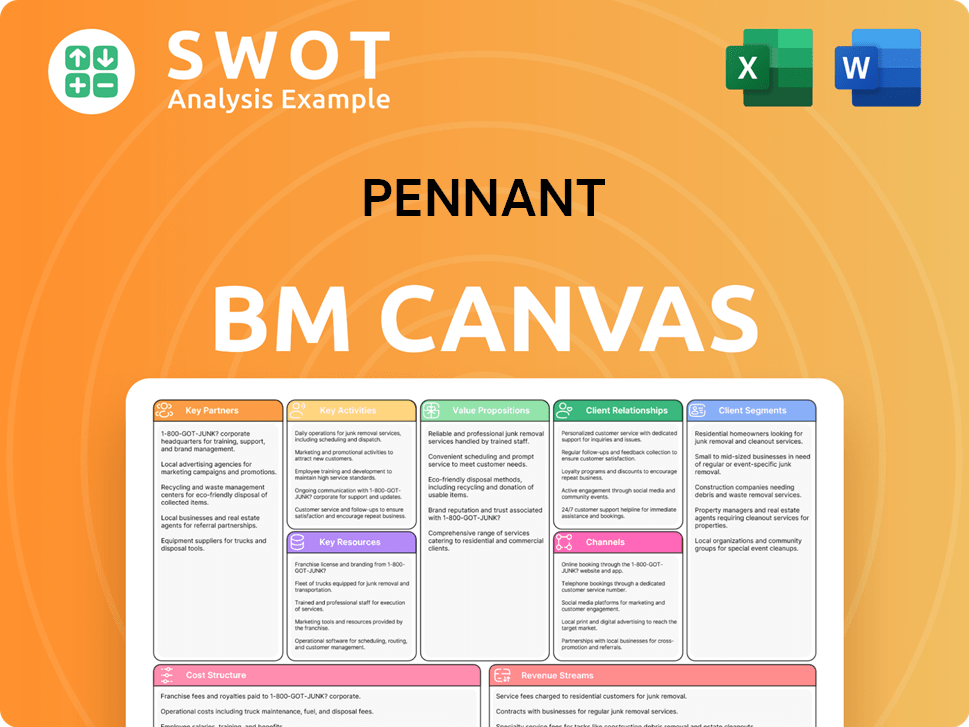
How Is Pennant Positioning Itself for Continued Success?
The Pennant Company holds a specific position within the healthcare services sector. Its focus on home health, hospice, and senior living, combined with a decentralized business model, allows it to build strong local relationships. This approach may lead to higher customer loyalty within its operational areas, primarily in the United States, where it targets regional markets for growth.
Several risks could affect Pennant operations and revenue. Changes in healthcare reimbursement policies can impact profitability. Staffing shortages, especially for skilled nurses, pose an operational challenge. The emergence of new competitors or technologies in healthcare delivery also presents a potential risk to its market position. The Pennant business model is designed to address these challenges.
The company's niche in home health, hospice, and senior living services distinguishes it from competitors. Its decentralized model supports local market focus. The company operates primarily in the United States, targeting specific regional markets for expansion.
Changes in healthcare reimbursement policies can affect profitability. Staffing shortages, particularly for skilled nurses and caregivers, represent a significant operational risk. New competitors or disruptive technologies in healthcare delivery could impact market position.
Sustained growth through strategic acquisitions and organic expansion is anticipated. The company plans to leverage local expertise for operational efficiency and improved patient outcomes. Clinical excellence and patient satisfaction remain key strategic priorities for revenue generation.
Its decentralized business model allows for strong local relationships. Focus on underserved markets provides a competitive edge. The company's commitment to clinical excellence and patient satisfaction is expected to drive revenue growth.
The future outlook centers on sustained growth through strategic acquisitions and organic expansion. Leadership emphasizes the decentralized model to leverage local expertise. The company focuses on clinical excellence and patient satisfaction. For more insights, consider reading a detailed analysis of the company's operations.
The company plans to continue its growth through strategic acquisitions and organic expansion within its core segments. This approach aims to increase its market presence and revenue streams. The focus remains on leveraging local expertise to improve operational efficiency and patient outcomes.
- Strategic Acquisitions: A key component of the growth strategy.
- Organic Expansion: Focused on increasing market share within existing segments.
- Local Expertise: Utilized to enhance operational efficiency.
- Patient Outcomes: A central focus of the company's operational strategy.
Pennant Porter's Five Forces Analysis
- Covers All 5 Competitive Forces in Detail
- Structured for Consultants, Students, and Founders
- 100% Editable in Microsoft Word & Excel
- Instant Digital Download – Use Immediately
- Compatible with Mac & PC – Fully Unlocked
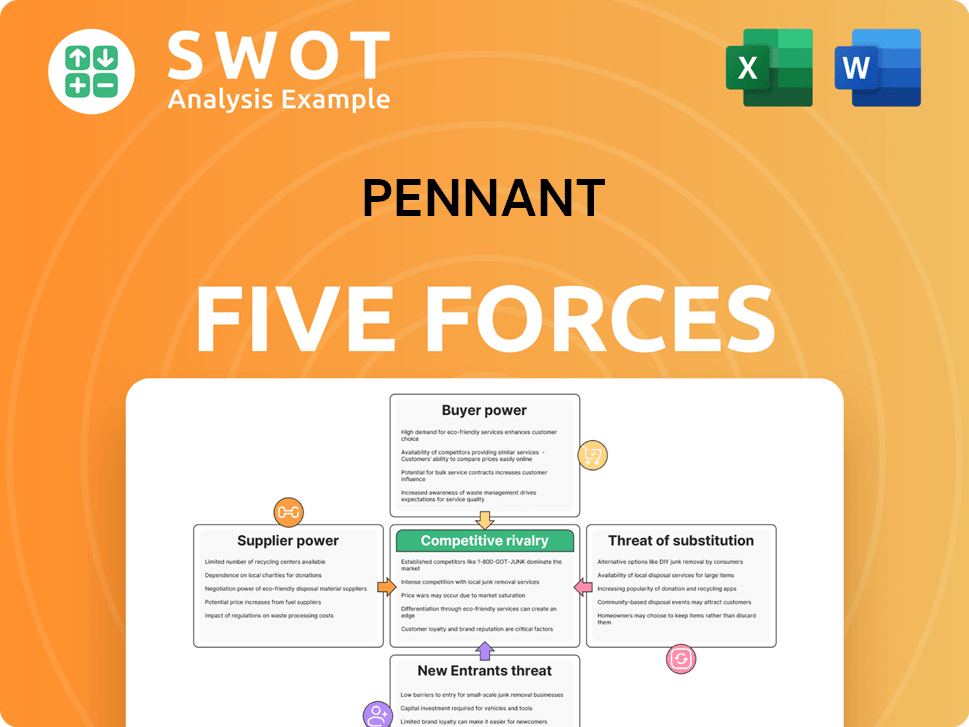
Related Blogs
- What are Mission Vision & Core Values of Pennant Company?
- What is Competitive Landscape of Pennant Company?
- What is Growth Strategy and Future Prospects of Pennant Company?
- What is Sales and Marketing Strategy of Pennant Company?
- What is Brief History of Pennant Company?
- Who Owns Pennant Company?
- What is Customer Demographics and Target Market of Pennant Company?
Disclaimer
All information, articles, and product details provided on this website are for general informational and educational purposes only. We do not claim any ownership over, nor do we intend to infringe upon, any trademarks, copyrights, logos, brand names, or other intellectual property mentioned or depicted on this site. Such intellectual property remains the property of its respective owners, and any references here are made solely for identification or informational purposes, without implying any affiliation, endorsement, or partnership.
We make no representations or warranties, express or implied, regarding the accuracy, completeness, or suitability of any content or products presented. Nothing on this website should be construed as legal, tax, investment, financial, medical, or other professional advice. In addition, no part of this site—including articles or product references—constitutes a solicitation, recommendation, endorsement, advertisement, or offer to buy or sell any securities, franchises, or other financial instruments, particularly in jurisdictions where such activity would be unlawful.
All content is of a general nature and may not address the specific circumstances of any individual or entity. It is not a substitute for professional advice or services. Any actions you take based on the information provided here are strictly at your own risk. You accept full responsibility for any decisions or outcomes arising from your use of this website and agree to release us from any liability in connection with your use of, or reliance upon, the content or products found herein.